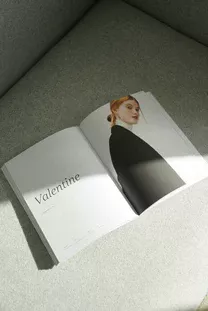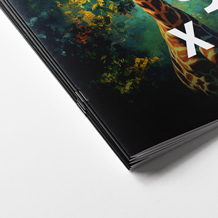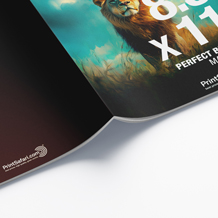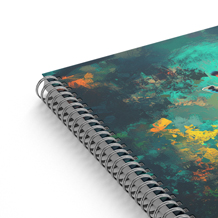Most Common Magazine Sizes
The most common sizes for printing magazines are 8.5 x 11 and 5.5 x 8.5 inches. Both portrait and landscape formats are available for either perfect-bound or saddle-stitched magazines. The digest size, which is slightly smaller at 5.5 x 8.25 inches, is also widely used. Square formats are also popular, either 8.5 by 8.5 inches or 5.5 by 5.5 inches. Nearly 90% of the magazines sold in the online printing business are close to these sizes, but you will find slightly smaller or larger ones for specific purposes. If you are looking for special sizes, please contact us and we will be happy to provide you with a custom quote.
The size of a magazine is important to impress readers. With the changing business model, magazine companies have introduced different magazine sizes to enhance creativity and the reading experience.
In this article, we’ll take a look at the different magazine sizes, including the standard U.S. and European sizes. We’ll also discuss why this format is so popular and some of its advantages.
Different Magazines in US Sizes & Formats
People have different preferences for typical magazine sizes and formats. Some people prefer smaller, digest-sized magazines that are easy to carry, while others prefer larger magazines with more reading material.
Here is an overview of some of the most popular magazine sizes and formats in US sizes. Click on the links in the table to view the corresponding products directly.
| Portrait | Landscape | Square |
| 3.5" x 8.5" | 6" x 4" | 5.5" x 5.5" |
| 4" x 6" | 8.5" x 5.5" | 8.5" x 8.5" |
| 4.25" x 11" | 11" x 8.5" | |
| 5.5" x 8.5" | ||
| 6" x 9" | ||
| 8.5" x 11" |
Need something custom that’s not on the list?
No problem – just file a custom request, and we’ll make it happen!
Digest size: 5.5 by 8.25 inches
An excellent option for smaller or pocket-sized magazines is the digest size, which measures 5.5 by 8.5 inches. This smaller size is perfect for newsletters or shorter publications because it takes up less space and doesn’t require as much binding material as a larger magazine.
Half letter size: 8.5 by 5.5 inches
This size is often used for magazines that focus on a specific niche topic. The half-letter size magazine may be easier for readers to carry and store, making it a popular choice for collectors.
A4 size: 8.3 by 11.7 inches
The A4 size is common for an international magazine because it is the standard paper size in many countries. This average size balances portability and reading material, making it a popular choice for general interest magazines.
Letter size: 8.5 by 11 inches
Letter-sized magazines are the standard size in the United States. They provide a lot of reading material, but can be more expensive to produce than a smaller size.
Tabloid size: 11 by 17 inches
Tabloid magazines are popular because of their large size, which allows for more photos and illustrations. This size is often used for entertainment or celebrity magazines because it allows more content to be printed on each page.
Broadsheet size: 22.5 by 35 inches
Broadsheet is the largest standard magazine size. This standard magazine size is often used for special interest publications such as art or architecture magazines. Broadsheet magazines are more expensive to produce, but offer a unique format that can appeal to readers.
Square sizes: 5.5 by 5.5 inches or 8.5 by 8.5 inches
Square magazines are popular for lifestyle and fashion publications. This unique format can be eye-catching on the shelf and offers readers a different reading experience. The square magazine is typically more expensive to produce than traditional magazine sizes.
In general, standard magazine sizes and formats often depend on the type of content and intended audience.
There is no one-size-fits-all approach to magazine format, cover, and design. The best way to determine which magazine sizes and formats work best for your publication is to experiment with different printing options and see what looks and feels right for your particular content and audience.
Choose from a variety of binding options to give your catalogs a professional finish, including saddle stitching, perfect binding, and wire-o. Below are the corresponding European magazine sizes, measured in millimeters. The international paper size standard is based on the German DIN standard: While DIN formats aren’t standard in our shop, we can produce them. Simply file a custom request, and we’ll take care of the rest! The length of a magazine can range from 1/8″ to 3 centimeters. In general, the thickness varies mainly between companies & issues. Coruna Magazine recommends that the magazine contain between eight and 160 pages with a magazine cover and varies depending on the number of topics the issues cover and their depth. Occasionally magazines contain multiple pages with a maximum of 240 pages with a magazine cover. What are the most common print magazine sizes? The most common sizes for print magazines are 8.5×11 inches, 5.5×8.5 inches, and 4×6 inches. What is a Vogue magazine & what are its dimensions? Vogue is a fashion and lifestyle magazine that covers many topics. These include fashion, beauty, culture, home and runway. The magazine has many different sections, each with its own focus. The magazine is published bimonthly by Conde Nast. It was founded in 1892 and has been published ever since. What is the pixel count and aspect ratio of a magazine cover? Assuming the magazine cover is rectangular, the dimensions are height by width in pixels. The aspect ratio is the width divided by the height. What is a good size for saddle-stitched magazines? When it comes to saddle-stitched magazines, the most common size is 8.5×11 inches. This allows for a good amount of content while still being manageable for the reader. What is the international paper size standard for a magazine? The international standard for magazine paper size is A4. This standard is based on the measurement of one square meter. This means that an A4 magazine measures 210 x 297 mm or 8.5 x 11 inches. Our most popular magazine printing sizes are 8.5 x 11 and 5.5 x 8.5 inches, available in both portrait and landscape orientation. For landscape formats, you can choose between perfect-bound or saddle-stitched binding. Another common option is the digest size, slightly smaller at 5.5 x 8.25 inches. Square sizes, such as 8.5 x 8.5 inches or 5.5 x 5.5 inches, are also in high demand. Nearly 90% of the magazines ordered online fall within these dimensions, although we also accommodate slightly smaller or larger sizes for specific purposes. If you’re looking for special U.S. sizes with glossy or matte covers, feel free to contact us for a custom quote. We’re also here to help if you need DIN A4 European sizes or other international standards with glossy or matte covers. Pricing is generally comparable to similar U.S. sizes, whether you’re printing a perfect-bound magazine with a cover or a saddle-stitched booklet. Select your magazine size now!Magazine Binding Options
European Magazine Size Standards
International Sizes (DIN)
US Sizes
DIN A4 (210mm x 297mm)
8.5" x 11" (equivalent to US letter size)
DIN A5 (148mm x 210mm)
5.5" x 8.5" (equivalent to US letter size)
DIN A6 (105mm x 148mm)
4" x 6"
Missing DIN sizes in our shop?
Magazine Thickness

Frequently Asked Questions
The dimensions of the Vogue magazine are 9.5 inches by 12 inches.
For a standard letter-sized piece of paper, 8.5 inches by 11 inches, the aspect ratio is 8.5 divided by 11, or about 0.7778. Standard computer monitors have an aspect ratio of 4:3, or 1.33:1. Widescreen monitors have an aspect ratio of 16:9, or 1.77:1. High-definition television (HDTV) uses an aspect ratio of 16:9, or 1.78:1.Custom Magazine Printing, Perfectly Tailored to Your Needs

Our Services






 Saddle Stitch
Saddle Stitch Perfect Binding
Perfect Binding Wire-O
Wire-O

